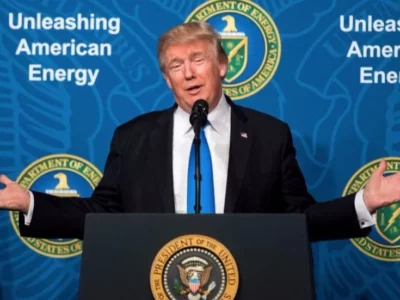Polar bear listing remanded

The headline might not sound like it, but this is good news for environmentalists.
The Endangered Species Act provides legal protections for two categories of species: those that are “endangered,” defined as in danger of extinction throughout at least a significant portion of their range; and those that are “threatened,” defined as likely to become endangered in the foreseeable future. The distinction is important because species listed as threatened need not be given the Act’s full protection. All “take” of endangered animal species is statutorily prohibited unless a permit is obtained. By contrast, threatened species need only be provided with the protections the listing agency deems necessary to provide for their conservation.
In 2008, responding to a petition submitted by the Center for Biological Diversity, the US Fish and Wildlife Service determined that the polar bear was threatened, but not endangered. Relying on that distinction, FWS issued a special rule drastically narrowing ESA protection. The special rule essentially authorizes without further review incidental take by activities outside the U.S. range of the polar bear (think greenhouse gas emissions), as well as any activities authorized under the Marine Mammal Protection Act (think oil and gas development in the U.S. arctic).
To the extent that it exempts greenhouse gas emissions from the ESA, the special rule appears to be invalid even if the polar bear has been properly designated as threatened. FWS regulations must provide for the conservation of threatened species, which as defined in the law means that the rules must be sufficient to allow the species to recover to the point where it no longer needs legal protection. Given that FWS concluded in its listing determination that loss of sea ice as a consequence of global warming is the major threat to the polar bear, it’s hard to see how the special rule provides for recovery. That issue is currently being litigated.
Meanwhile, because special rules can only apply to threatened, not endangered, species, attacking the listing decision as not protective enough provides another route to attacking the special rule. If the polar bear is actually endangered, it has to be protected against all forms of take. And that’s where this decision comes in.
The various challenges to the polar bear listing, which have come both from the environmental community and from listing opponents, have been consolidated in the federal District Court in Washington, D.C. That court has now delivered a partial victory for environmentalists, ruling that FWS must reconsider its determination that the polar bear is threatened rather than endangered
The ruling holds that FWS misinterpreted the Endangered Species Act. FWS took the position that the plain language of the Act forecloses listing a species as endangered unless it is in “imminent” danger of extinction. It decided that the polar bear didn’t meet that standard because there are enough of the long-lived animals that they won’t be extinct any time soon.
The court disagreed. It ruled that the Act’s definition of endangered species is ambiguous on the temporal dimensions of extinction risk, rejecting the Center for Biological Diversity’s argument that the Act plainly mandates the listing of any species at high risk of extinction. The court remanded to FWS, directing the agency to explain its interpretation of the Act’s definition of endangered species, including how that interpretation serves the ESA’s purposes.
The decision only demands additional explanation, on a pretty short timeline — by December 23 of this year — of the decision to list the bear as threatened. But FWS should view it as an opportunity to do more.
This remand gives the Obama administration, which so far has a mixed record on the Endangered Species Act, a chance to make a lasting, positive contribution. FWS should take this opportunity to revisit its interpretation of the Act. Reading the Act in light of its purpose — to protect dwindling species against human threats — FWS should consider a species endangered if the irreversible effects of actions occurring now create a high risk of extinction, even though extinction won’t happen right away. Any other reading would convert the ESA from the nation’s most powerful conservation law to a futile observer of extinctions.
The polar bear is a perfect example. Sure, bears that are now alive won’t die tomorrow or next year. But the accumulation of greenhouse gas emissions in the atmosphere means that sea ice is disappearing and won’t come back. If the polar bear is going to be persist beyond another couple of generations, those emissions need to be controlled now. The law has to permit (and indeed a solid argument can be made that it requires) a reading that allows its protections to kick in when they can be useful, not just in time to record the extinction of the species.
It’s got to be tempting for FWS simply to put some more lipstick on its pig of a listing decision. But that would be a serious mistake. In the end, even if it survives, that decision probably won’t be able to shield the agency from dealing with consultations on greenhouse gas emissions. And seriously reconsidering the listing decision offers a chance to clarify and improve implementation of the ESA on a broader scale.






Reader Comments